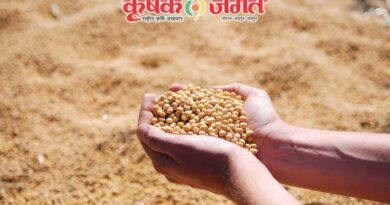Chilli Hybrid ARKA Kyati [F1]
23 July 2022, New Delhi: Crop : CHILLI HYBRID
Variety : ARKA Kyati [F1]
Arka Khyati (F1): high yielding F1 hybrid for fresh market, fruits12cm X 1.2cm; light green and turn deep red on maturity, medium pungent, fruits smooth and turn wrinkled after drying, tolerant to CMV, yields: 40-45t/ ha (fresh) & 5-5.5 t/ha (dry) in 180 days.
Recommended States : KARNATAKA
Soil and climate: Chilli crop raised for both green and red ripe dry chilli purpose is mainly concentrated in red sandy loam and black cotton soils of Karnataka, Maharashtra, Andhra Pradesh and Tamil Nadu. Optimum soil pH for chilli crop is 6 to 6.5. A frost free period of 4 months with maximum temperature of 350C and minimum temperature not below 100C is optimum for raising chilli crop.
Season: Kharif season (June-October); however, for green fruits, chilli crop is raised throughout the year.
Seed rate: Depending on the variety 1 to 1.25 kg of seeds are required for sowing one hectare of land.
Spacing: Rainfed: 90 X 45 or 75 X 45cm; Irrigated: 75 cm x 45cm
Time of planting: Under rainfed conditions-June-July, Around Bangalore July transplanted crop gives the maximum yield.
Fertilizer dose: FYM 25t/ha; NPK for irrigated crop: 150:75:75 Kg/ha; for rainfed crop:100:50:50 kg/ha.
Pest and disease Management:
Thrips: Mix Acephate 0.5gm, 2 ml of Pongamia oil and 1 ml sticker and make an emulsion
(add a little water and shake thoroughly in a bottle) and make the volume to 1 lt and spray for management. Alternately, spray Acephate 75 SP @ 1.5 gm/l or Fipronil (1 ml/l) or Lamda cyhalothrin 5 EC (0.75 ml/l) or Imidacloprid 200 SL (0.3 ml/l)
Aphid: Foliar application of Dimethoate (0.2%) is recommended.
Powdery mildew and Cercospora leaf spot diseases: Foliar application of Wettable sulphur (0.3%) or Tridemorph (0.1%) or Hexaconazole (0.075%) or Dinocap (0.1%) or Flusilazole (0.03 %) or Myclobutanil (0.1%) or Carbendazim (0.1%) at 10 -15 day intervals.
Also Read: China: Measures counter food security risks


![Chilli Hybrid ARKA Swetha [F1] Chilli Hybrid](https://www.en.krishakjagat.org/wp-content/uploads/2022/07/Chilli--390x205.jpg)







